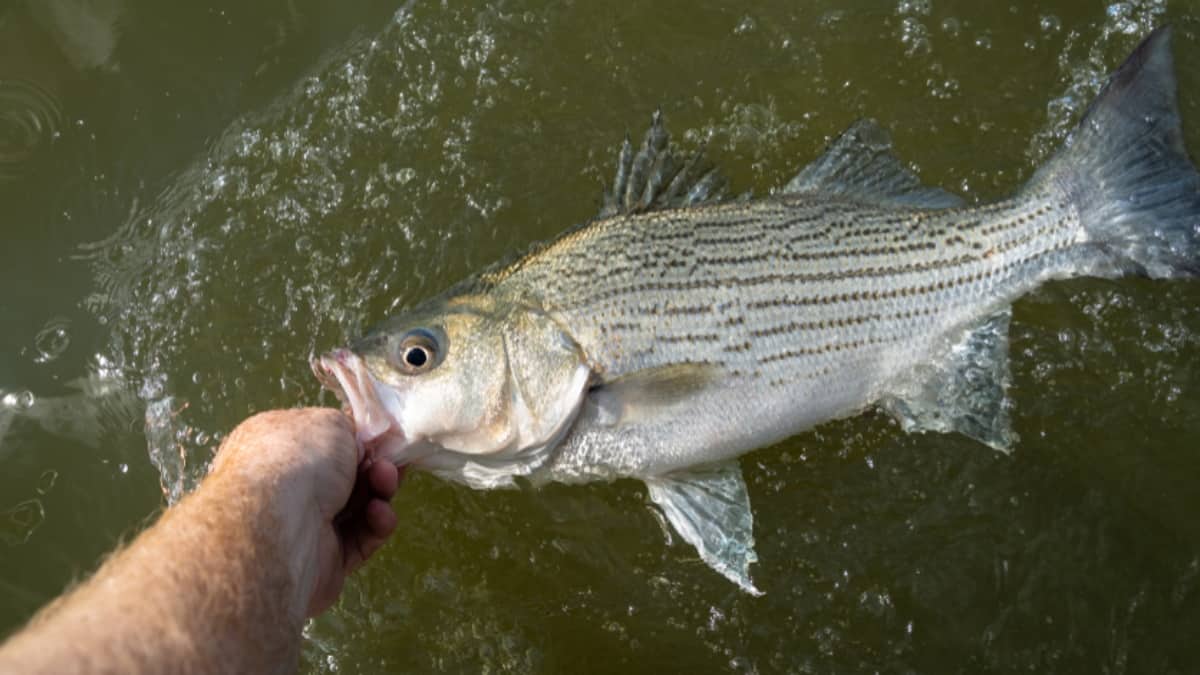Striped bass, also known as stripers, are highly sought after by anglers due to their size, fighting ability, and taste. To maximize success in catching striped bass, understanding the ideal conditions for fishing them is crucial. This guide covers the essential factors that influence striped bass behavior and provides tips on how to use these conditions to your advantage.
Water Temperature
Striped bass are most active in water temperatures ranging from 52°F to 70°F. During the spring and fall, when water temperatures fall within this range, striped bass are more likely to be found in shallow waters, feeding actively. In the summer, as temperatures rise, they often move to deeper, cooler waters, making them harder to locate. Monitoring water temperature using a thermometer or fish finder can help you identify the best fishing spots.
Tidal Influence
Tides play a significant role in striped bass fishing. The best times to fish are typically during incoming and outgoing tides, as these movements increase water flow and bring food to the fish. Striped bass often position themselves along tidal currents, waiting for prey to come to them. Using tide charts, you can plan your fishing trips to coincide with these peak feeding times, increasing your chances of success.

Weather Conditions
Striped bass are sensitive to weather changes. Overcast skies, light rain, and low wind conditions are ideal for striped bass fishing. These conditions reduce light penetration in the water, making stripers more comfortable to come closer to the surface to feed. Conversely, bright sunlight can push them to deeper waters. Additionally, low pressure systems, often associated with stormy weather, can trigger increased feeding activity, while high pressure systems can make them less active.
Time of Day
The early morning hours and late evening are the best times for striped bass fishing. During these periods, low light conditions make stripers feel more secure and aggressive in their feeding. Night fishing can also be highly productive, especially in areas where stripers are known to feed after dark. Using lures that mimic the natural prey of stripers and creating noise or vibrations can attract them during these low-light conditions.
Water Clarity
Water clarity significantly affects striped bass behavior. In moderately clear water, striped bass are more likely to rely on sight to locate their prey. When water is too clear, however, they may become more cautious and harder to catch. Conversely, in very murky water, they rely more on their lateral line to detect vibrations. Adjusting your fishing techniques, such as using brightly colored lures in murky water or more natural presentations in clear water, can improve your success.

Habitat and Location
Striped bass prefer habitats with abundant food and structure. Estuaries, bays, river mouths, and coastal areas with rock piles, submerged vegetation, and drop-offs are prime locations. Specific areas such as the Chesapeake Bay and the Hudson River are renowned for their striped bass populations. Understanding the local geography and the presence of these structures can help you target the right spots.
Seasonal Patterns
Striped bass migration patterns are influenced by seasonal changes. In the spring, stripers move from deeper waters to spawn in rivers and estuaries. During the summer, they often stay in cooler, deeper waters, returning to shallower areas in the fall as temperatures drop. Understanding these seasonal movements can help you plan your fishing trips for the most productive times.

By paying attention to water temperature, tidal movements, weather conditions, time of day, water clarity, habitat, and seasonal patterns, anglers can significantly increase their chances of successfully catching striped bass. Experimenting with different baits and lures and adapting to the conditions will make you a more effective striped bass angler. Happy fishing!

Robert Smith is the proud owner of Bait Barrels and Bows, a premier fishing sports store established in 1989. With over three decades of experience in the industry, Robert has honed his skills to become an expert angler, sharing his vast knowledge and passion for fishing with enthusiasts around the world. Through his store and writings, Robert provides invaluable tips and guidance, helping both novice and seasoned anglers improve their techniques and enjoy the sport to its fullest. His commitment to the fishing community is evident in his dedication to quality products and excellent customer service.

